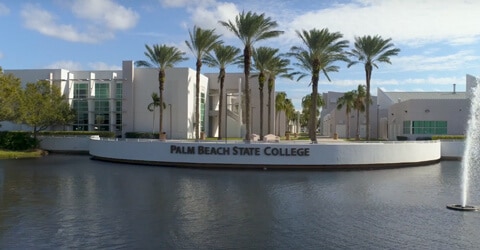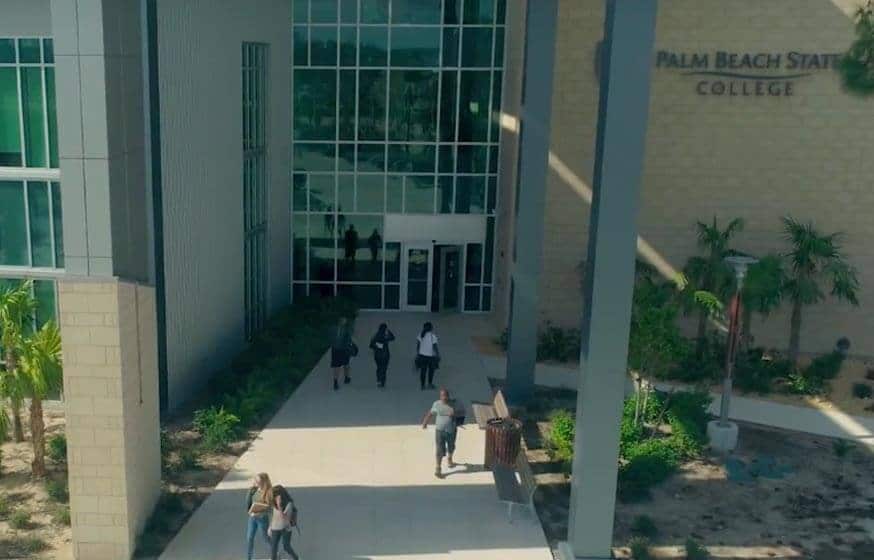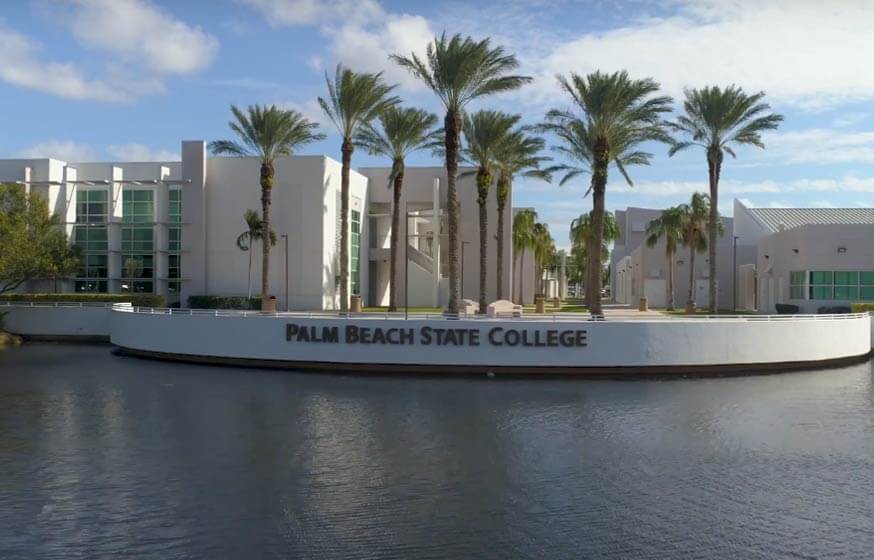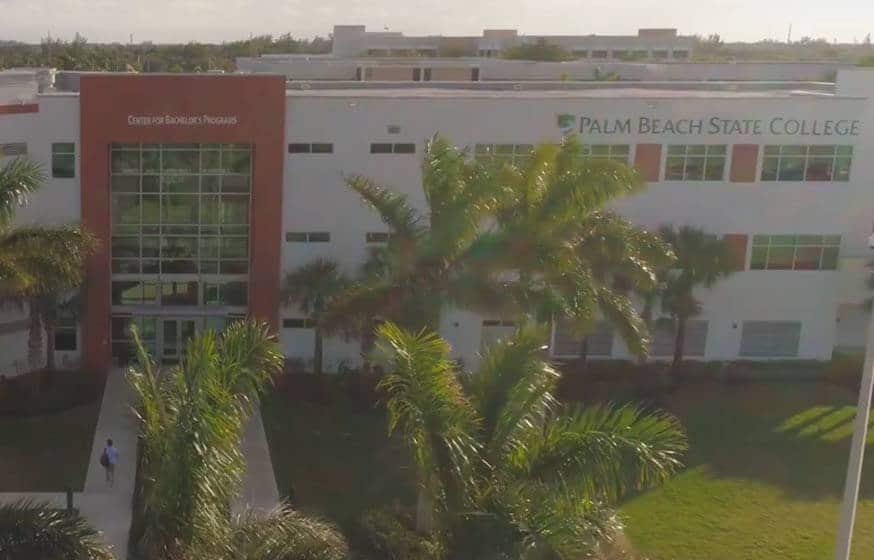Get Matched With Online Colleges
Palm Beach State College had an exciting start. The first dean of the college, Howell Watkins, started the school out of the Palm Beach High School building in 1933. During that time, the Great Depression was ending and students struggled to find jobs with only a high school diploma.
Watkins, along with the high school superintendent, took it upon themselves to equip the graduates with more skills to get better jobs. What started small has now turned into a college with almost 50,000 students from around the world. The college, located right at Palm Beach, has over 130 areas of study. Palm Beach State College is one of the country’s leading institutions for creating skilled professionals, with various study options ranging from skilled trades to computer science to child care.
Search All Programs
Overview of Palm Beach State College
The college offers only undergraduate awards, including associate degrees, bachelor’s degrees, and certificates. The student body includes adults looking for more certification and recent high school graduates. Since its goal is to produce adults with useful skills in various fields, the college offers students partnerships with over 400 business professionals. This provides undergraduates with access to those with real-world experience, advice, and networking skills.
General Information
| School Type | Primarily Associate's, Public |
|---|---|
| Campus Setting | Suburb: Large |
| Campus Housing | No |
| Student Faculty Ratio | 24:1 |
| Graduation Rate | 37% |
| Year Founded | 1933 |
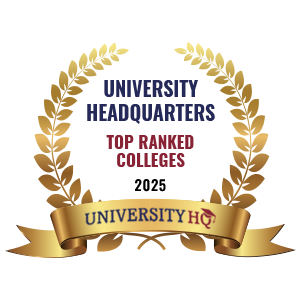
Student Enrollment
Total Students31,816
31,816
0
Undergraduate Student
Male 13,363
Female 18,453
Graduate Student
Male NA
Female NA
Explore Map
Top Rankings For Palm Beach State College
Admissions
APPLICATIONSNA
ACCEPTANCENA
Acceptance RateNA
Enrollment NA
| Admissions | |
|---|---|
| Application Fee | $40 |
| High School GPA | NA |
| High School Rank | NA |
| High School Transcripts | NA |
| College Prep Courses | NA |
| Recommendations | NA |
| SAT/ACT | NA |
| TOEFL (Test of English as a Foreign Language) | NA |
| Application Deadline | August 20 |
| Common Application Accepted | No |
Tuition Cost & Financial Aid
The tuition for all students has not changed over the past few years. The in-state tuition remains around $2,400, while the out-of-state tuition is closer to $8,700. Meanwhile, the price of supplies and books has increased by 50%, with the most recently published price at $2,700.
Students that live in college dorms pay about $12,800, while those that prefer to live off-campus or with family need to pay only $7,150. In total, the prices range from $12,300 for in-state students living with family, to $31,400 for out-of-state students living on campus.
About 74% of the student population receives financial aid such as Pell grants, local scholarships, and student loans. With the financial assistance included, the average net price for new students is $2,833. The average net price is the total cost to the student after financial aid is applied to their bill. To find how much a particular student would have to pay, considering household income and available scholarships, use the price calculator.
| Average net price | 2017-2018 |
|---|---|
| Net Price | $3,064 |
| Average Total Aid | NA |
| Students Receiving Financial Aid | 72% |
| Room & Board | $12,825 |
Sticker Price
- Tuition In-State - $2,444
- Tuition Out-of-State - $8,732
- Books and Supplies - $2,700
- Room & Board - $12,825
- Other - $7,155
Academics
With tens of thousands of people studying there, the student-to-faculty ratio is understandably higher, measuring 29 to 1. With such a big college, a student can expect larger classes, though they thin down a bit by the time you reach your major courses, later in your college career.
The transfer-out rate is relatively low compared to other colleges. In 2013, only 13% of students transferred to another institution, and the overall graduation rate for that year was 37%. In general, there are more graduating women than men. The overall graduation rate for females is 40% compared to the 34% rate for males.
When broken down by race and ethnicity, the group with the highest rate is the native Hawaiians, with a 67% graduation rate. The group with the next highest graduation rate is those of Asian descent, with 53% earning a degree and non-resident aliens, or international students, have a 47% graduation rate.
Compared to other colleges in the area, Palm Beach State College has a low transfer-out rate, and many students continue with their studies. That fact, combined with the large student body, shows the popularity of this school.
Retention
Rate
4 year
Graduation
Rate
6 year
Graduation
Rate
Student Population Total
Student Population 31,816
31,816
0
Most Popular Programs & Majors
(# of Diplomas Awarded by Subject)
| All Business Majors | 281 Total Graduates / 67% |
|---|---|
| Business Administration, Management and Operations, Other | 281 Graduates |
| Health Professions and Related Programs | 81 Total Graduates / 19% |
| Registered Nursing/Registered Nurse | 81 Graduates |
| All Computer Information Science Majors | 57 Total Graduates / 14% |
| Computer/Information Technology Services Administration and Management, Other | 57 Graduates |
| All Other Diplomas | 0% |
Outcome & Salary
With all types of students, there is a reasonably low transfer rate. For first-time students that are studying full-time, only 17% move onto a different institution. Most students (41%) receive an associate degree, while only 2% got their bachelor’s degree. Full-time students that have studied previously in another college have a 23% transfer rate, which is higher than first-time students. However, an impressive 47% got their associate degrees and only 3% pursued a bachelor’s.
Finally, 27% of part-time students that have previously studied elsewhere choose to move onto another school. Another 27% get their associate degree. The percentage of students that get their bachelor’s remains low at only 2%. While Palm Beach State College is a popular choice, most students opt for an associate degree than the other alternatives.
Unfortunately, the fact that most graduates earn associate degrees means that their average salary after graduation is a bit lower than other colleges. A graduate’s average salary after gaining their degree is $43,200 in their early career. However, once they reach the mid-point of their career, that can increase to $76,200, which is significantly better than those with only a high school education can expect on average ($38,792).
Palm Beach College also leads to a solid return on investment. Based on the cost of school for the average student, and the average income of graduates, we can find a projected return on investment (ROI) for those who earn their degree. The projected 10-year ROI for them is $507,744 and the projected 20-year ROI increases to $1,269,744; and this is assuming they don’t use the intervening time to improve their educational achievements.
| Graduates Salary | |
|---|---|
| College Grads Early Career Salary | $43,200 |
| College Grads Average Salary | $52,000 |
| College Grads Mid Career Salary | $76,200 |
| Return on Investment (ROI) | |
|---|---|
| 10 Year Salary Earnings Potential | $520,000 |
| 20 Year Salary Earnings Potential | $1,282,000 |
| Cost of Education (Net Price) 4 Year | $12,256 |
| 10 Year Projected ROI | $507,744 |
| 20 Year Projected ROI | $1,269,744 |
| No College Education Salary Comparison | |
|---|---|
| National Average Salary | $38,792 |
| 10 Year Projected Income | $387,920 |
| 20 Year Projected Income | $775,840 |
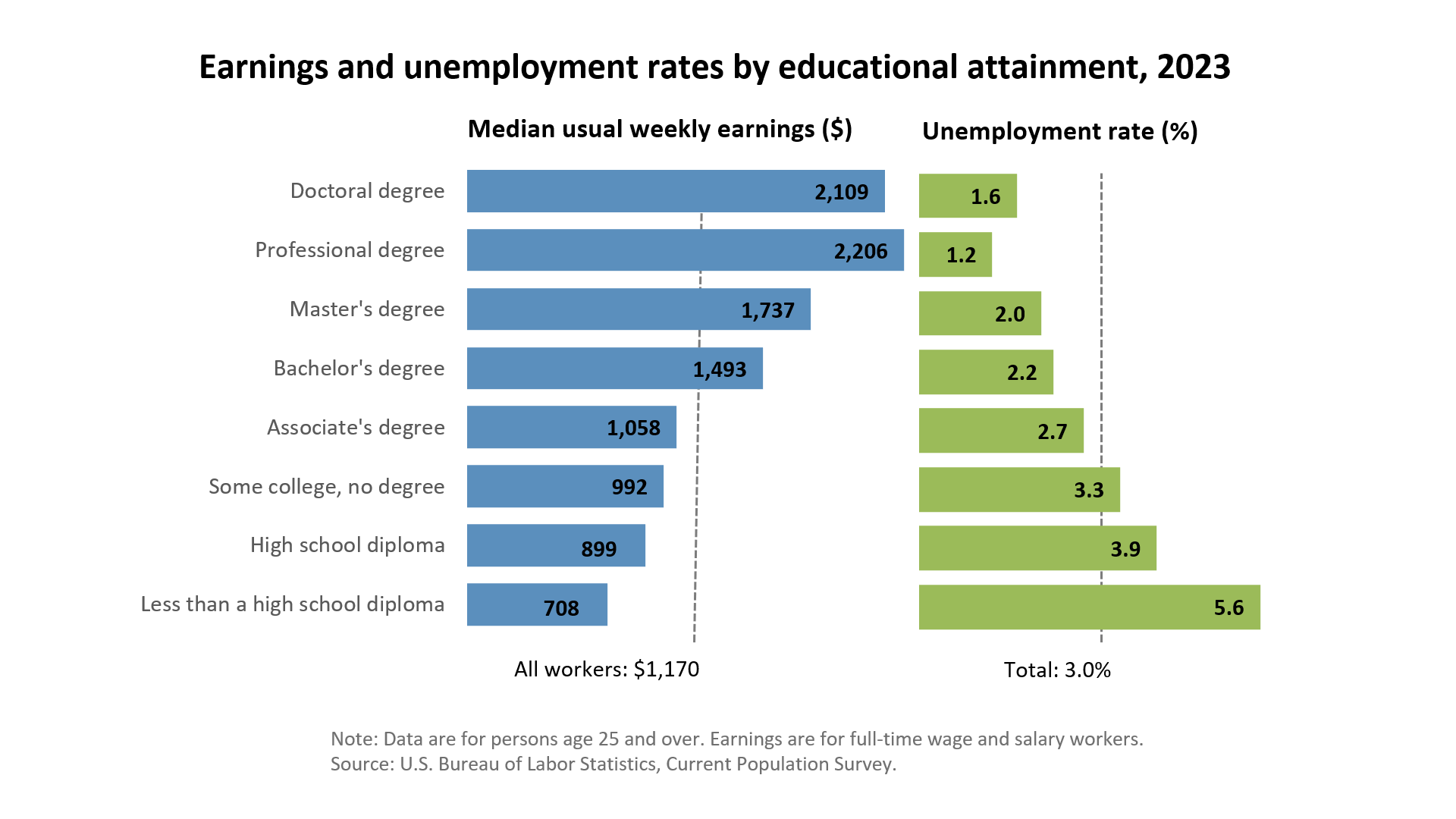
Related Top College Resources




